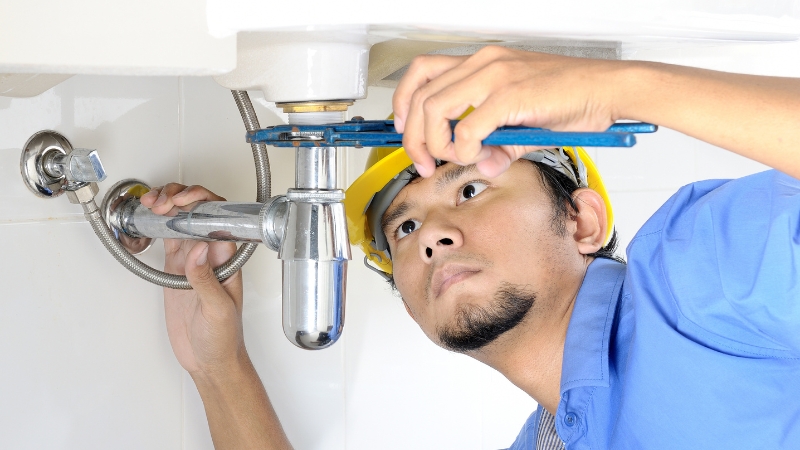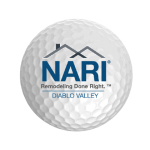Preventive plumbing maintenance, including small leaks and water usage, is the key to saving money, ensuring safety, and steering clear of catastrophic plumbing disasters. Regular maintenance is vital for keeping your plumbing systems in top-notch condition, preventing small leaks and optimizing water usage. By implementing these essential tips, you can steer clear of major plumbing issues and ensure the longevity of your system. Neglecting preventative plumbing maintenance tips can lead to costly repairs and potential water damage, while staying proactive can help you sidestep these troubles altogether and protect your property.
Table of Contents
Toggle1. Understanding Your Plumbing System
a. Identify Potential Problems
Understanding the plumbing system in your home is crucial for effective preventive maintenance. Knowing how it works will help you identify potential plumbing problems early on. For example, if you notice a decrease in water pressure, it could indicate plumbing problems such as a blockage or leak in the pipes. By recognizing these signs, you can take proactive steps to address issues before they become major plumbing disasters.
Familiarizing yourself with the layout of your plumbing system and its key components such as pipes and valves is essential for effective maintenance. This knowledge of plumbing tips allows you to locate and shut off the main water valve quickly in case of plumbing problems like a burst pipe. Being aware of where the shut-off valves for individual fixtures are located enables targeted action when dealing with specific issues, such as a leaking sink or toilet.
b. Types of Pipes
Another vital aspect of understanding your plumbing system is knowing about the different types of pipes used within it. For instance, regular plumbing maintenance can help prevent issues with older homes that may have galvanized steel pipes prone to corrosion and rust buildup over time, leading to reduced water flow and quality. On the other hand, modern homes often use PVC (polyvinyl chloride) or PEX (cross-linked polyethylene) pipes due to their durability and resistance to corrosion.
Recognizing these differences helps you anticipate potential issues based on the type of pipes installed in your home’s plumbing systems. For example, if you live in an older house with galvanized steel pipes, being mindful of their susceptibility to corrosion can prompt proactive measures such as regular inspections or considering pipe replacement options before they lead to significant problems.
2. Locating and Using Your Water Shut-Off Valve
a. Importance of Knowing the Location
Knowing the location of your water shut-off valve is crucial for preventing potential plumbing disasters. In case of a burst pipe or any other water-related emergency, being able to quickly locate this valve can help minimize damage to your property. Imagine a situation where water is gushing out from a broken pipe – knowing exactly where the shut-off valve is situated enables you to act promptly.
Locating the shut-off valve should be one of the first things you do when moving into a new home. It’s usually found near the perimeter of your property, often in basements or crawl spaces. If you’re unable to find it, consider contacting a professional plumber who can assist in its identification.
b. Operating And Maintaining Your Shut-Off Valve
Learning how to properly operate your shut-off valve is just as important as knowing its location. This knowledge empowers you to swiftly stop water flow in an emergency, potentially saving thousands in repair costs.
To operate it effectively, turn the handle clockwise until it stops. This action will cut off all incoming water supply into your home. Regularly checking that this mechanism functions correctly ensures that it will work efficiently when needed most.
In addition to regular checks by homeowners, seeking professional assistance for periodic inspections can provide peace of mind regarding proper functionality.
3. Regular Inspection and Maintenance of Pipes and Faucets
a. Inspect Pipes And Faucets
Regular plumbing maintenance involves inspecting your pipes and faucets for leaks, corrosion, or any signs of damage. This proactive approach can help you catch potential issues early, preventing them from turning into costly repairs down the line. By keeping an eye on your plumbing system, you can address small problems before they escalate into major disasters. Leaks not only waste water but also lead to higher water bills over time.
It’s essential to check for any visible signs of wear or damage on both the exposed and hidden pipes in your home. Look out for damp spots, discoloration, or mold growth near your pipes as these could indicate a leak. Regularly inspecting faucets is crucial in maintaining their functionality. Keep an eye out for dripping faucets that may need immediate attention to prevent further damage.
b. Maintain Faucet Aerators
As part of routine maintenance, cleaning faucet aerators is crucial to ensure optimal water flow throughout your home. Over time, mineral deposits can build up in the aerator, leading to reduced water pressure at the faucet. By removing these deposits regularly, you can maintain proper water flow without putting unnecessary strain on your plumbing system.
Cleaning faucet aerators is a simple task that homeowners can easily perform themselves as part of preventive maintenance efforts. It involves unscrewing the aerator from the end of the faucet spout and soaking it in vinegar to dissolve any mineral buildup before rinsing it thoroughly.
c. Replace Worn-Out Washers or Seals
Another important aspect of regular inspections involves checking washers and seals in faucets for wear and tear. Worn-out washers or seals are common culprits behind leaking faucets that contribute to wasted water and increased utility bills over time.
4. The Dangers Of Chemical Drain Cleaners And Alternatives
a. Harmful Effects
Chemical drain cleaners, such as those containing human waste, can corrode pipes over time. These harsh chemicals not only eat away at the clogs but also damage the pipes themselves. This can lead to leaks, cracks, or even burst pipes, causing extensive water damage in your home.
Moreover, these cleaners pose a threat to the environment when they are washed down the drain and into waterways. The toxic substances in these products can contaminate soil and water sources, affecting plants, animals, and even human health.
b. Natural Alternatives
Instead of resorting to chemical drain cleaners that harm both your plumbing system and the environment, consider using natural alternatives like baking soda and vinegar. When combined with hot water, this mixture creates a powerful fizzing reaction that effectively breaks down organic matter without causing any harm to your pipes.
Regularly cleaning drain covers is another preventive measure against clogs. By removing debris buildup from these covers on a consistent basis, you can significantly reduce the likelihood of blockages forming within your drains. Simple actions like this contribute to maintaining an efficient plumbing system without resorting to harmful chemical solutions.
5. Techniques For Effective Drain Cleaning And Clog Prevention
a. Use A Plunger Or Plumbing Snake
When dealing with minor clogs, it’s essential to use a plunger or plumbing snake promptly. These tools can effectively dislodge small blockages before they escalate into major issues. By doing so, you can prevent the need for harsh chemical drain cleaners.
For example, if you notice that your bathroom sink is draining slowly due to hair buildup, using a plunger can help clear the blockage without resorting to chemical solutions. This proactive approach not only saves money but also prevents potential disasters caused by severe clogs in the future.
b. Mind What Goes Down The Drain
To prevent blockages from forming in your pipes, it’s crucial to be mindful of what you pour down the drain. Avoid pouring grease, oil, or large food particles down any drains in your home. These substances can solidify within the pipes over time and create obstructions that impede proper water flow.
By being cautious about what goes down your drains, you’re taking preventive measures against costly plumbing issues such as stubborn clogs and backups. Instead of relying on harsh chemical drain cleaners, adopting this simple habit can save you money while safeguarding your plumbing system from potential disasters.
c. Regularly Flush Drains With Hot Water
In addition to being mindful of what goes down your drains, regularly flushing them with hot water is another effective preventive measure against blockages. Hot water helps dissolve and wash away accumulated grease, soap scum, and other residues that could lead to clogs if left unchecked.
For instance, after washing dishes or cooking greasy foods in the kitchen sink, running hot water for a few minutes can help prevent grease buildup inside the pipes. This straightforward practice contributes to maintaining clean and clear drains without relying on aggressive chemical solutions like traditional drain cleaners.
6. Proper Care For Appliances To Prevent Water Leaks
a. Regular Inspection
Inspecting appliance hoses regularly is crucial to prevent water damage caused by small leaks. Look out for signs of wear, such as cracks or bulges in the hoses, and promptly replace any damaged ones. By catching these issues early, you can avoid costly repairs and potential water damage.
It’s important to keep an eye on your washing machine and dryer lint traps too. Cleaning these traps regularly prevents lint buildup that can lead to clogs and potential water overflow. This simple maintenance task goes a long way in preventing water damage due to clogged drains or overflows
b. Manufacturer’s Instructions
Following the manufacturer’s instructions for appliance maintenance is essential in ensuring their proper functioning while avoiding any mishaps. These guidelines often include specific details about cleaning, inspecting, and replacing parts at recommended intervals.
For instance, manufacturers typically provide guidance on how frequently certain components should be inspected or replaced. Adhering to these recommendations helps maintain the appliances’ efficiency and reduces the risk of unexpected malfunctions that could result in water damage.

7. Maintaining Optimal Water Pressure in Your Home
a. Install A Pressure Regulator
To prevent damage to your pipes caused by high water pressure, consider installing a pressure regulator. This device helps maintain the water pressure within the recommended range, safeguarding your plumbing system from potential harm. By controlling the water flow, it ensures that excessive force doesn’t wreak havoc on your pipes, ultimately saving you from costly repairs.
Address Sudden Changes Promptly Regularly check the water pressure using a pressure gauge to ensure it remains within the safe zone. If there are any sudden changes in water pressure, address them promptly. Swift action can help you avoid potential issues and keep your plumbing system running smoothly.
b. Importance Of Monitoring Water Pressure
Monitoring and maintaining optimal water pressure is crucial for preventing various problems that can lead to expensive repairs or replacements. High water pressure can strain appliances, cause leaks, and even lead to burst pipes if left unaddressed. On the other hand, low water pressure may indicate underlying issues such as clogs or pipe damage.
8. Annual Inspection And Upkeep Of Water Heaters
a. Regular Maintenance
To ensure your water heater operates efficiently, it’s crucial to drain and flush it annually. This process removes sediment buildup that can cause the heater to work harder, increasing energy consumption. By flushing out the sediments, you prevent potential clogs and extend the lifespan of your water heater.
Regular maintenance also involves inspecting the pressure relief valve. This valve is a critical safety feature that prevents excessive pressure from building up inside the tank. If this valve malfunctions or gets blocked, it could lead to leaks or even an explosion in extreme cases.
b. Professional Services
While DIY maintenance is beneficial, considering professional maintenance services can provide a more thorough inspection and upkeep of your water heater. A professional plumber has the expertise to detect any underlying issues that may go unnoticed during regular inspections. They can also perform tasks such as checking for corrosion, testing heating elements, and ensuring all components are functioning optimally.
9. Identifying and Addressing Hard Water Issues
a. Signs Of Hard Water
If you notice mineral deposits on your faucets or soap scum residue in your sinks, chances are, you’re dealing with hard water. These telltale signs can also manifest as white scale buildup around showerheads and taps.
Hard water can lead to significant problems within your plumbing system over time, causing blockages and reducing the efficiency of appliances like water heaters.
b. Solutions For Hard Water
One effective solution is to install a water softener system, which works by removing the minerals that cause hard water. This not only safeguards your plumbing but also extends the lifespan of appliances such as dishwashers and washing machines.
Regularly cleaning affected areas like showerheads and faucet aerators is another way to combat the effects of hard water buildup. By doing so, you prevent potential clogging issues caused by mineral accumulation.
10. Don’t Be Too Rough
a. Avoid Over-tightening
When connecting pipes and fittings, use the appropriate tools and avoid over-tightening. Over-tightening can damage threads and fittings, leading to leaks.
b. Use the Right Tools
Ensure you are using the correct tools for the job. Using tools that are too large or too small can cause damage to pipes and fittings.
c. Support Pipes Properly
Make sure that pipes are adequately supported and secured. Avoid putting excessive stress on joints, and use hangers or clamps to provide proper support.
d. Turn Off Water Supply
Before beginning any plumbing work, turn off the water supply to the area you are working on. This helps prevent accidental water damage and makes the task safer.
Conclusion
You’ve now gained essential insights into the world of preventive plumbing maintenance. By understanding your plumbing system, locating the water shut-off valve, and mastering regular inspection and maintenance techniques, you’re equipped to save money and prevent potential disasters. Say goodbye to chemical drain cleaners and embrace effective, eco-friendly alternatives. Remember, maintaining optimal water pressure, caring for appliances, and addressing hard water issues are crucial steps in preventing plumbing emergencies. By implementing these tips, you not only safeguard your home but also ensure long-term cost savings.
Take charge of your plumbing’s well-being today. Start by scheduling a thorough inspection and embracing preventive maintenance practices. Your proactive approach will not only save you money but also provide peace of mind knowing that you’ve taken the necessary steps to avoid potential plumbing catastrophes.
Frequently Asked Questions
1. How Often Should I Inspect My Plumbing System?
You should aim to inspect your plumbing system at least once a year. Regular inspections can help identify potential issues early, saving you from costly repairs and preventing water damage.
2. Are Chemical Drain Cleaners Safe To Use?
Chemical drain cleaners can be harsh on your pipes and harmful to the environment. Consider using natural alternatives like baking soda and vinegar for a safer and more eco-friendly approach to clearing clogs.
3. What Are Some Signs Of Hard Water Issues In My Home?
Common signs of hard water include soap scum buildup, dry skin after showering, and mineral deposits on faucets. If you notice these indicators, consider installing a water softener to address the issue.
4. Why Is It Important To Maintain Optimal Water Pressure In My Home?
Maintaining optimal water pressure ensures efficient functioning of your appliances and fixtures. Low pressure can indicate underlying problems while high pressure may strain pipes. Monitoring water pressure helps prevent potential damage.
5. How Do I Locate And Use My Water Shut-Off Valve?
The main shut-off valve is typically located near the perimeter of your property or where the main supply line enters your home. Familiarize yourself with its location so that you can quickly turn off the water in case of emergencies.
Experience Top-Notch Preventive Plumbing Maintenance with Garcia Plumbing and Home Restoration!
At Garcia Plumbing and Home Restoration, we recognize the importance of maintaining a healthy and efficient plumbing system in your home. Our team, known for their proficiency in Preventive Plumbing Maintenance, is committed to ensuring the longevity and reliability of your plumbing infrastructure. Our focus at Garcia Plumbing and Home Restoration goes beyond mere fixes; we strive to enhance the overall functionality and safety of your home’s plumbing system. We have built a remarkable reputation in Contra Costa County for our dedication to quality, our extensive knowledge of plumbing maintenance, and the trust we’ve established with numerous satisfied customers. Don’t let plumbing issues disrupt your home’s comfort and safety. Contact us today for exceptional Preventive Plumbing Maintenance services and enjoy the assurance of a well-maintained plumbing system in your home!




